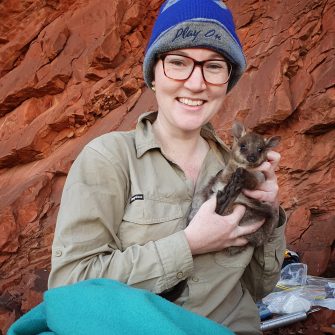
Dr. Aly Ross
Wildlife Ecologist, Australian Wildlife Conservancy
Postgraduate years at CES |
2017 to 2021 |
Thesis title |
How does naiveté affect co-existence between native and alien species? |
Current employer |
Australian Wildlife Conservancy |
Current employer type |
Not-for-profit
|
Current position |
Wildlife EcologistJune 2021 – PresentYookamurra Sanctuary, South Australia |
What are your responsibilities in your current role?
I am responsible for delivering AWC’s science program at sanctuaries in South Australia. This includes monitoring and managing reintroduced populations of threatened species like the Numbat and Bilby, conducting research, and reporting outcomes to the science community and public.
How have your experiences and skills gained at Centre for Ecosystem Science helped shape your professional journey so far?
UNSW, and Centre for Ecosystem Science in particular, have a high calibre of scientists especially in the conservation and ecology sectors. This creates an environment that encourages quality research and collaboration. Although post-graduate research is often an individual endeavour, the Centre for Ecosystem Science always welcomed teamwork and the sharing of knowledge, both through formal classes and seminars and through informal catch-ups throughout the office spaces. I learned to work efficiently by myself and to seek help from those more experienced than me, a skill vital in the ever-changing conservation landscape. Many of us were vying for the same grants, positions, or awards, yet a win was celebrated regardless of the recipient. Competition will always be a factor in our field so celebrating everyone’s progress as a win for the environment is an important skill.
What is your favourite memory from your time at Centre for Ecosystem Science?
Morning teas with short (usually) talks to learn about the cool projects happening across the Centre.
